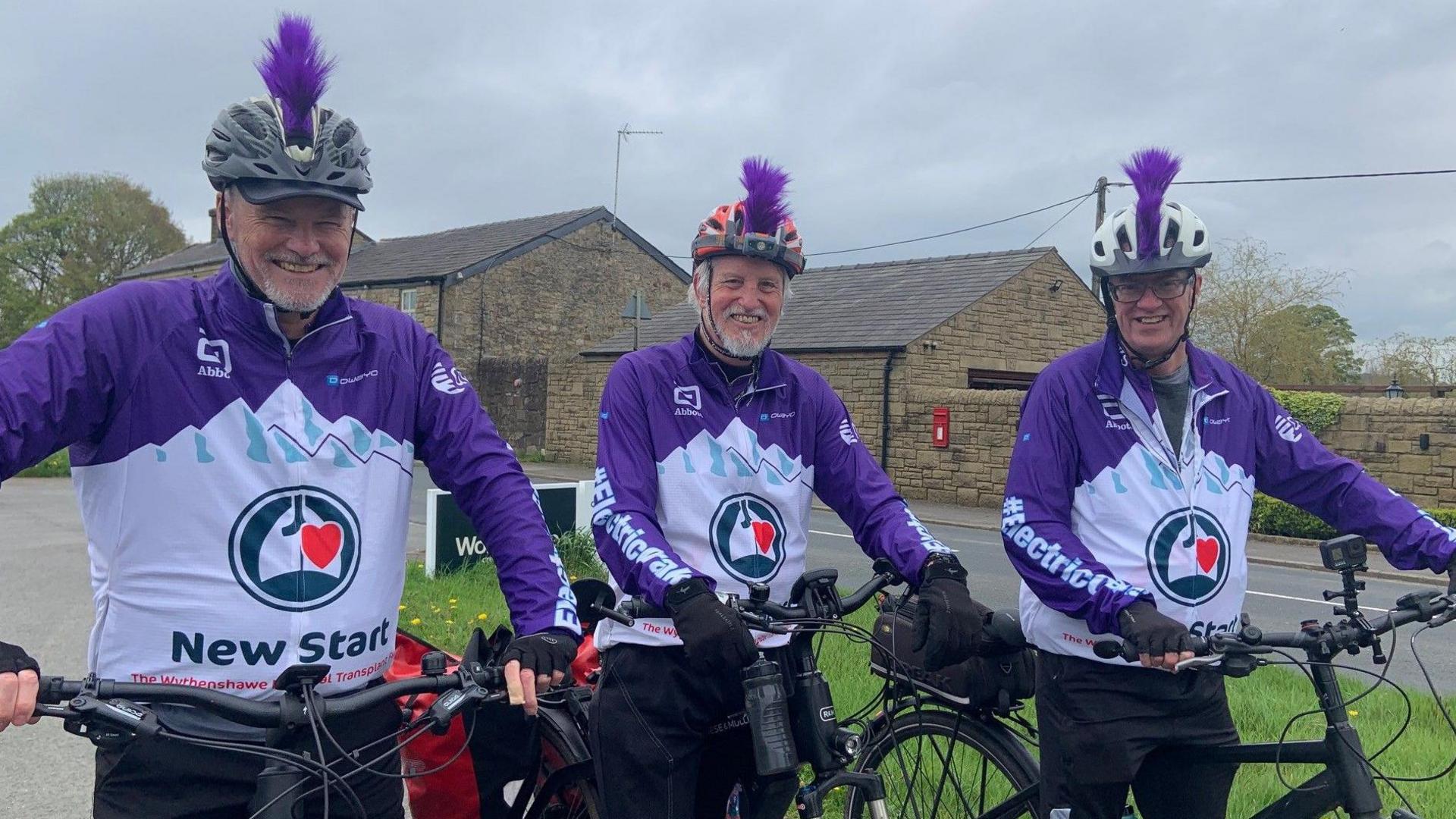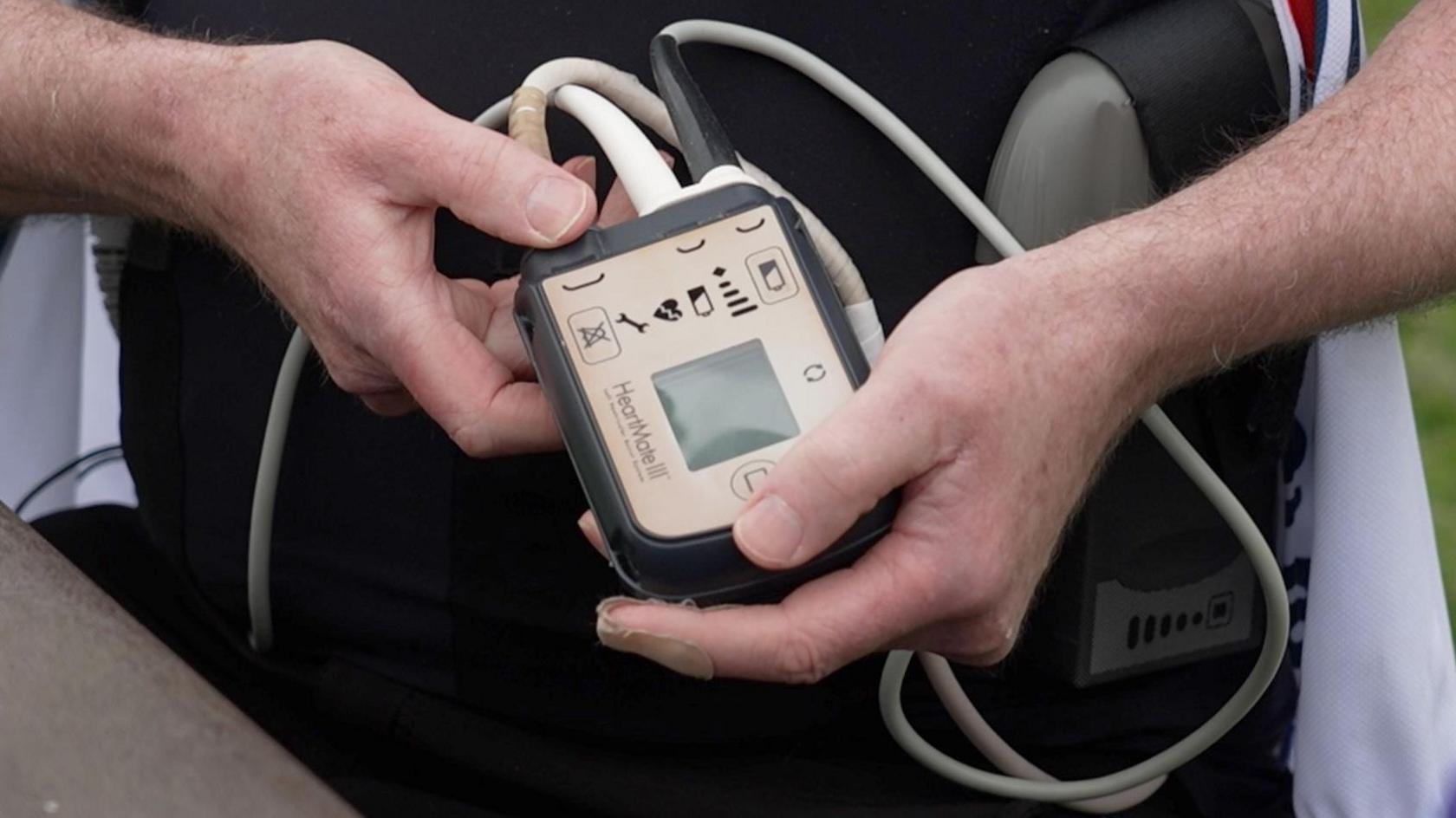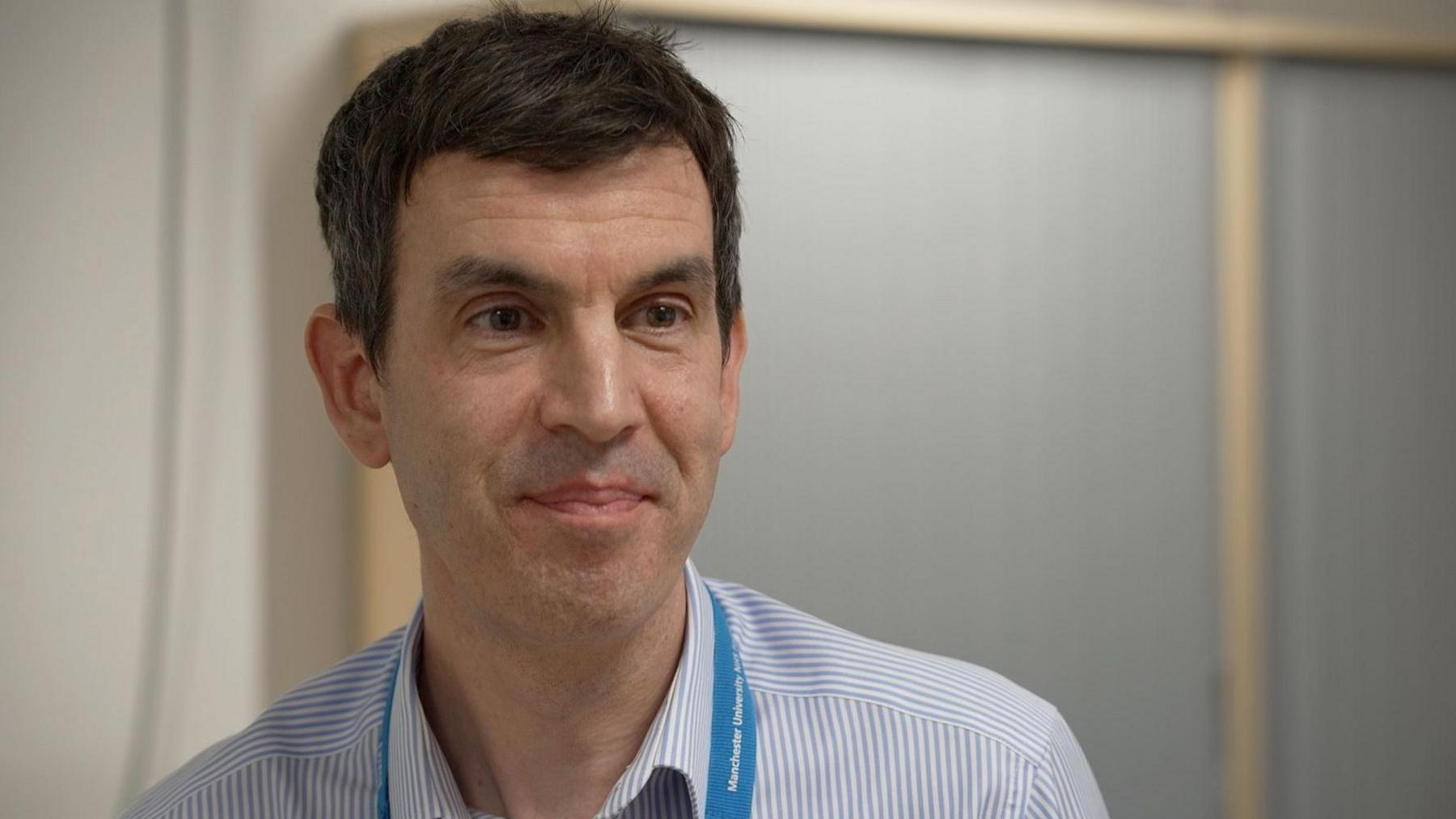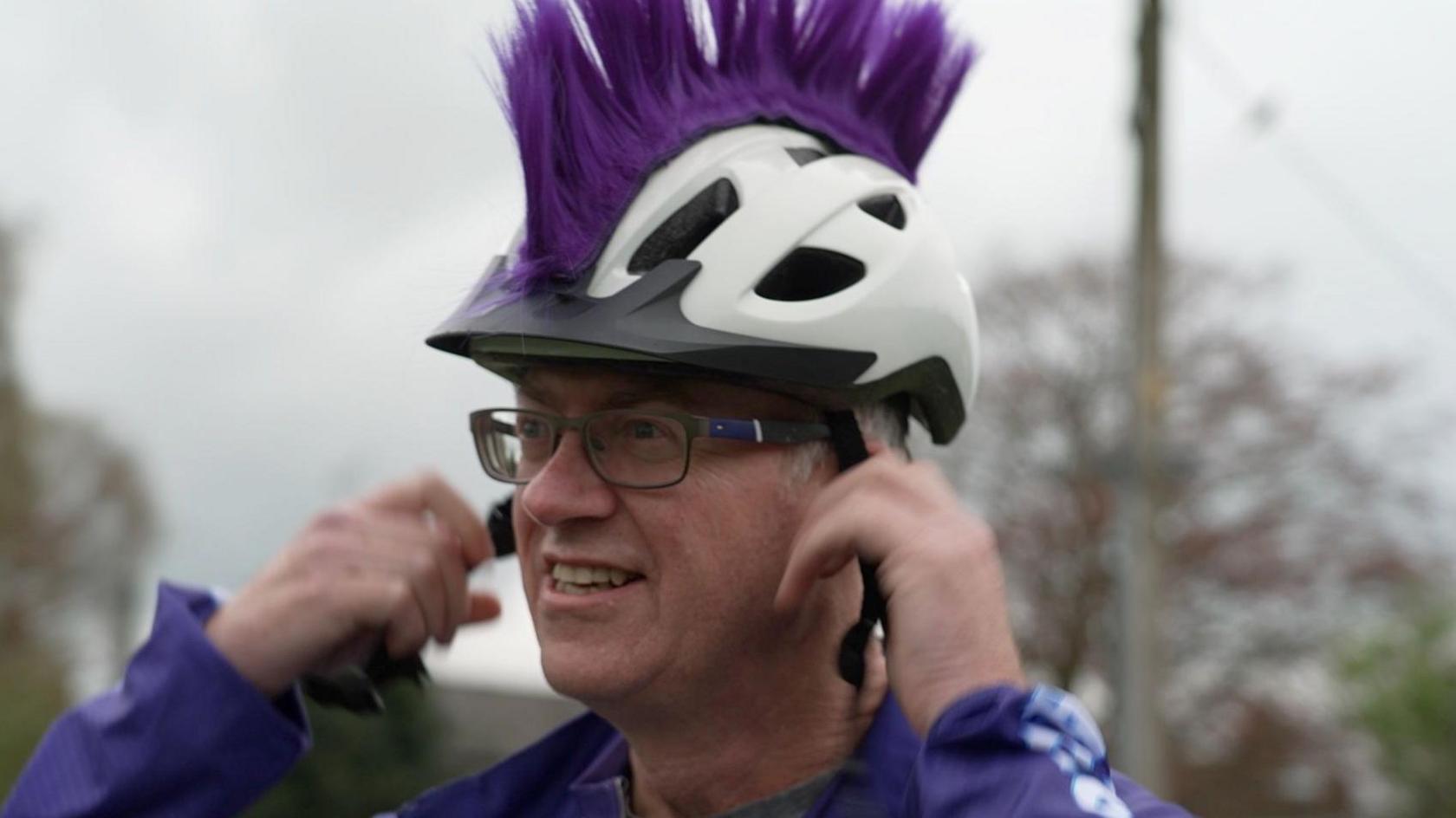'My life would've ended five years ago' without heart pump

The Electric Cranks are delighted to be back on the road
- Published
Six years ago, fitness fanatic Ian Wilton collapsed with a massive heart attack while out climbing in Snowdonia National Park with his son.
"It took six mountain rescue teams and a helicopter to get me to hospital," remembers the former PE teacher and keen fell runner, who was 54 at the time.
Bad weather meant the rescue took nine hours, by which time his heart was severely damaged.
Ian was put on the urgent transplant list but, just a month later, was told he was too ill to have one.
He says he had only a matter of weeks to live.
But then another option was proposed and agreed.

A Left Ventricular Assist Device (LVAD) largely replicates the heart
Ian was given a mechanical heart pump known as a Left Ventricular Assist Device (LVAD) which has largely taken over the work of his own heart.
The left ventricle is the part of the heart which normally pumps blood around the body.
The LVAD is surgically implanted and then runs from an electric charge outside of the body – either batteries or mains power.
"I’m very fortunate to have been given it," says Ian, who is now 60. "It saved my life."
He shows me the special vest he wears with side pockets for the batteries and controller.
"This device has to be with me 24/7," he says.
"There’s always anxieties around things like power cuts – I’ve had a couple of those at home and you get warnings and alarms and you’ve got time to do things and immediately your stress levels go up."
As an electrical device, the LVAD can’t go anywhere near water.
But while swimming and sailing are out, Ian has found a new passion: e-bikes.
He is a member of the Electric Cranks, a group of LVAD patients who have found common ground enjoying nature and exercise while out on two wheels.
"Just the joy of riding in the open countryside with a bunch of other people that you know well that you trust - that have been through similar experiences - is absolutely fantastic,” says one of the group's founders, Bob Gower.
He suffered from a genetic cardiomyopathy for more than a decade before having an LVAD fitted six years ago.
In his mid-60s at the time, he too was struggling.
The number of people needing a heart transplant far exceeds the number of donors.
LVADs are seen as a way of buying those patients valuable time while they wait on the list.
The technology and operation to insert an LVAD costs more than £100,000, so there are strict guidelines laid down by the NHS.

Consultant cardiologist Dr Steve Shaw
Consultant cardiologist Dr Steve Shaw assesses patients for suitability.
"The criteria to being suitable for an LVAD is focussed around whether you are a transplant candidate," he tells me.
"Your heart failure has to be severe enough to put you in imminent jeopardy of death."
The device has always been seen as a bridge to a full heart transplant.
Dr Shaw says while that is still the "gold standard", LVAD survival rates are now so good that some, particularly older, patients are choosing to stay with what they have, rather than risk further major surgery.
He says there are pros and cons to both. The LVAD requires batteries and some limitations on lifestyle, but a transplant also requires huge change.
"The baggage with transplant is that you have a foreign organ and that foreign organ will try to be rejected by the immune system unless we use immunosuppressant drugs.
"And immunosuppressants when you take them over a long time period gives a patient unique risks."
Those risks include infections and even some skin cancers.
Bob Gower, now 71, says he has decided to stick with his LVAD.
"I think my quality of life at the moment is more than good enough and I wouldn’t want to go through the risk and upheaval of having a transplant now even if it were available,” he says.

Chris Margetson says the LVAD has unquestionably saved his life
Fellow cyclist Chris Margetson says he is also still on the transplant list, but would be happy to stay with what he has.
The 60-year-old has an LVAD that was fitted in 2018 after suffering from a virus which attacked his heart.
“We’re all very grateful for it because without it there’s no possibility of us being here basically," Chris tells me.
"My life would've ended five years ago. So there’s no doubt about it, it’s a fantastic machine."
Ian Wilton is still hoping for a donor heart. In the meantime he and the other Cranks go on regular rides around northern England and Wales.
More transplant stories
Heart transplants: How do they work and how are they organised?
- Published1 May 2024
Lung transplant recipient thanks 'true hero' donor
- Published30 April 2024
Bob says his e-bike has allowed him to renew his love of cycling.
"It’s a fantastic experience that I thought I would never be able to do again," he says.
Last year the group completed the Coast to Coast ride.
Members give regular talks to raise awareness and they have featured in medical conventions around the world.
They also raise money for the transplant centre charity, New Start, which buys equipment and helps with accommodation for patients’ families.
"We fully appreciate the support we’ve had and it’s a way to give back to the hospital in terms of thanks," says Ian.
And with that, they’re up and off – for another day of electrically assisted exercise in the great outdoors.